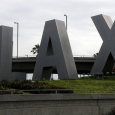Living Wage
Living wage ordinances typically set a wage above the federal minimum wage, but they only apply to businesses that service receive state contracts or recieve assisstance from the government. Living wage policies are meant to ensure that workers recieve enough income to secure basic amoynts of food shelter, transport, medical needs and other necessities.
Commentary
Cry Wolf Quotes
By mandating an even higher minimum, the living wage prices even more people out of work. The people who push these cockamamie ideas never seem to ask why any employer would hire someone at $8.23 if that person's services are only valued in the marketplace at, say, $5.00.
The proposed living-wage ordinance, before Detroit voters Nov. 3, on the surface, seems admirable. But one doesn't need to look beyond its title to find seriously flawed logic. The same jobs that the measure's proponents are seeking to promote, in reality, will likely disappear.
The increased cost of labor is folded into a bid for a state contract that is then passed on to the state government (which is funded by taxpayers).
Nonetheless, if the goal of the Coastal Zone Minimum Wage is to help low-income workers in Santa Monica, the Ordinance is worse than useless. The direct benefits of the Ordinance are more poorly targeted than in any social welfare legislation we have ever studied.
Evidence
-
The Economic Impact of Local Living Wages
The Economic Policy Institute finds that the costs of living wage ordinances are often overestimated.
-
Examining the Evidence: The Impact of the Los Angeles Living Wage Ordinance on Workers and Employers
Los Angeles Alliance for a New Economy: The LA living wage ordinance brought a pay raise to 10,000 workers, most of whom were poor.
Backgrounders & Briefs
Living Wage Policy Brief: Stephanie Luce
Living wage ordinances have helped thousands of workers and tiresome cry wolf claims are wrong.


